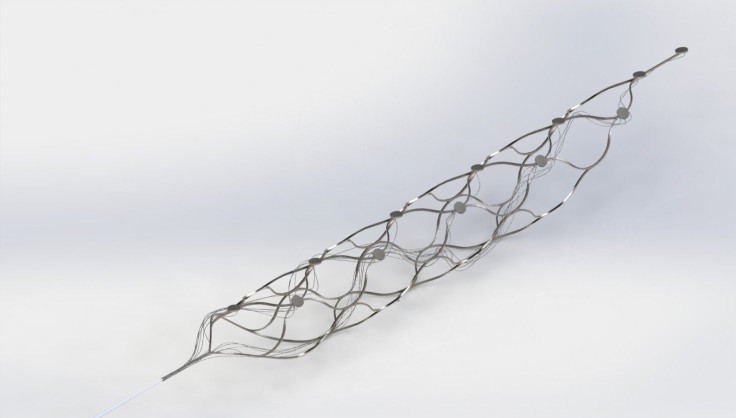'Stentrode' Brain-Machine Interface May Soon Help Quadriplegics Control Exoskeletons, Other Machines With Their Mind

Just last week, Medical Daily reported on the Phoenix, an exoskeleton suit that helps people paralyzed from the waist down walk again. But these people, known as paraplegics, aren’t the only ones who need help moving around on their own again; quadriplegics, people who are paralyzed in all limbs, need the same help. Thanks to funding from U.S. Department of Defense, researchers at the University of Melbourne have developed a paper clip-sized device that may one day help quadriplegics walk again.
In a report published in Nature Biotechnology , researchers described how they implanted the stent-based electrode, called a stentrode, into the blood vessel of a sheep’s brain. Once inside, it was capable of recording neural activity in the motor cortex, where voluntary movement is controlled. Still in its early stages, the end goal of this research is to quickly translate these recordings into actual movements in exoskeletons, wheelchairs, prosthetic limbs, or computers.
"Our vision, through this device, is to return function and mobility to patients with complete paralysis by recording brain activity and converting the acquired signals into electrical commands, which in turn would lead to movement of the limbs through a mobility-assist device like an exoskeleton,” said principal author Dr. Thomas Oxley, a neurologist at The Royal Melbourne Hospital, in a press release. “In essence this a bionic spinal cord."
The stentrode is made up of a stent — a mesh tube doctors use to improve blood flow — that’s covered in small electrodes. While it would make sense to place something with electrodes in patients’ brains, where there’s a direct connection to neural activity, the researchers wanted to avoid craniotomies, which involve opening a patient’s skull and removing bone. So instead, they plan to use a catheter to place it into patients’ necks.
"Utilizing stent technology, our electrode array self-expands to stick to the inside wall of a vein, enabling us to record local brain activity,” said co-principal investigator Dr. Nicholas Opie, a biomechanical engineer at the University of Melbourne, in the release.
In a pre-clinical study testing for safety, the researchers implanted the devices into the necks of free-roaming sheep, and found they had minimal impact on the brain while inside their bodies for up to 190 days. Moreover, after recording neural activity in the sheep, they found the power source for the device remained constant despite excessive movement.
More than 300,000 people are believed to live with a spinal cord injury in the United States. Fortunately, technology has taken strides in helping them regain some of their mobility. In recent years, we’ve seen nerve rewiring, which gave a man the ability to move his hands, as well as two instances in which brain implants allowed patients to control robotic hands with their thoughts. Researchers hope to begin human trials with the stentrode in two years, and if all goes well, quadriplegics will be one step closer to moving again.
Source: Oxley T, et al. Minimally invasive endovascular stent-electrode array for high-fidelity, chronic recordings of cortical neural activity. Nature Biotechnology. 2016.
Published by Medicaldaily.com



























